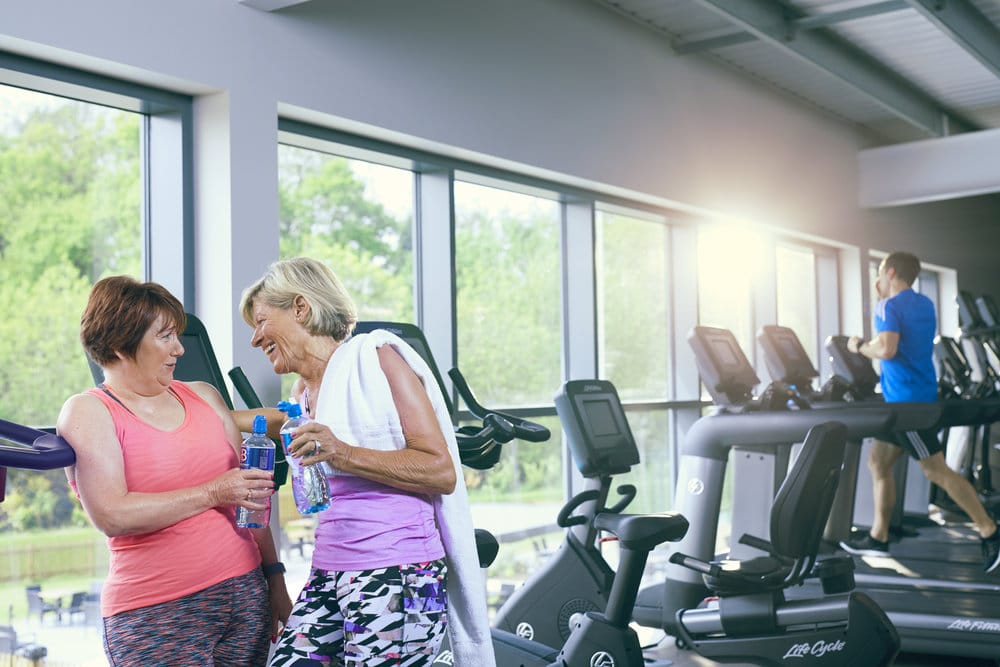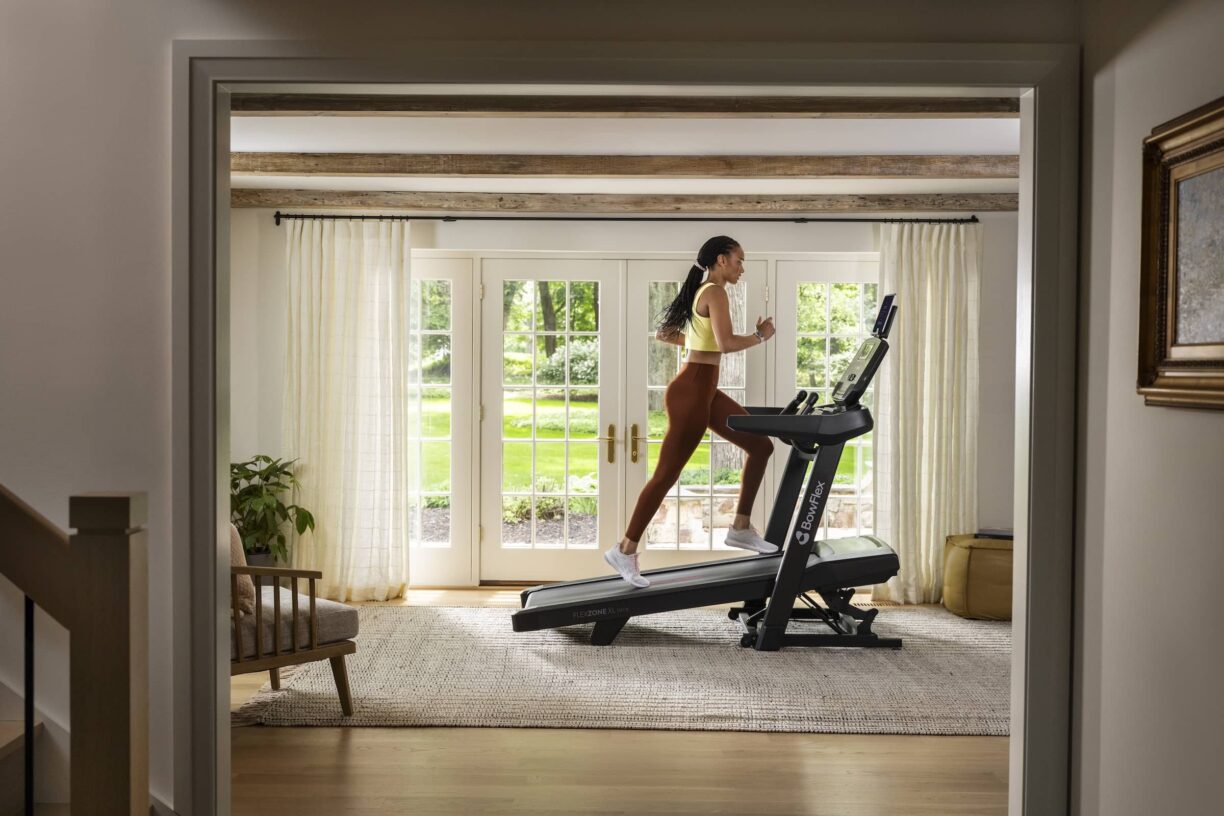It’s recommended that seniors should exercise, as it’s a reliable way to maintain health in their later years.
But while it’s smart for seniors to exercise, there are certain exercises that should be avoided. Why? So you can stay safe while improving your overall fitness.
Staying safe can include a variety of methods: from knowing your physical limits to wearing medical alert jewelry if you have a health condition.
Here are the exercises you shouldn’t be doing — and the exercises you should replace them with.
What You Shouldn’t Do: Barbell Squats
Squats are a great exercise for people of any age. While strengthening your legs — quads, hamstrings, calves and glutes — you are also able to target your core. But performing weighted squats requires baseline strength and balance, something that seniors might not currently have.
Doing weighted squats without baseline strength and stability could lead to injury, especially if they do not have a spotter to support them.
A Better Alternative: Chair Sits
To avoid the potential injury of weighted squats, seniors should opt for performing chair squats. Also called chair sits, these should only be performed with a strong, sturdy chair — one that is leveled and will not budge, move or twist when sitting on it.
Once you can freely perform chair sits, unweighted, you can begin incorporating weights to further increase your strength and stability.
These can include kettlebells, dumbbells or resistance bands. We recommend performing them without weights when starting, instead perfecting your form before moving on.
What You Shouldn’t Do: Deadlifts
The deadlift is another exceptional exercise, as it’s a maneuver that works out multiple parts of the body, both upper and lower.
But doing this exercise with weight can be dangerous for a senior. Such a dynamic movement could lead to a senior tweaking their back or neck if they try to move too much weight at once or perform the exercise improperly.
A Better Alternative: Hex Bar or Kettlebells
If a senior is thinking about doing deadlifts, they should opt instead to do them unweighted, working on the movement itself.
On the other hand, they can perform kettlebell swings or work with a hex bar (trap bar).
Kettlebell swings are great workouts, as the fluid movement is less hazardous and arduous on the body.
Deadlifts can also be performed with kettlebells — an even safer alternative to doing them with a barbell.
The hex bar is an exceptional alternative to a barbell, too. The hex bar is constructed to put less pressure on the lower back and shoulders, distributing the weight more evenly to make for safer lifting.
What You Shouldn’t Do: Running
Running is one of the most popular forms of exercise. We, as humans, are built for it, aren’t we? It’s an awesome form of exercise, but it can be rough on senior bodies.
Older bodies tend to struggle with running due to the amount of force that is exerted on the body with each stride and step, especially if you’re running on a treadmill or pavement/concrete.
A Better Alternative: Walking
If you’re a lifelong runner, you might feel compelled to continue running, which is your decision to make! Other seniors looking to get themselves in shape should opt for walking instead.
Walking is a low-force form of exercise that still allows you to burn a sufficient number of calories over time.
Whether it’s on a trail or around the city, you can cover a lot of mileage each day without harming your body.
If you do go out for a walk, it’s recommended you wear a medical alert bracelet. You never know what will happen and it’s important to have a form of medical identification while out exercising.
What You Shouldn’t Do: Crunches
Core health is imperative for seniors, as a strong lower back and abs leads to increased balance and overall health.
But crunches can do some damage on a senior who is not in good shape to begin with, whether for arching your back or pinching a nerve in your shoulders or neck.
A Better Alternative: Planks
Planks are a great alternative to crunches, where you can still exercise your core without having to bend and twist your spine in the process.
The lesser range of motion allows you to strengthen your core without putting your body in harm’s way.
Moreover, you’ll be able to strengthen other parts of your body you wouldn’t when doing crunches, such as your triceps, shoulders and chest.
What You Shouldn’t Do: Chest Press
Chest press machines are an excellent way to improve overall upper-body strength; however, the exercise can be difficult on seniors, especially those who have heart or lung issues or have chests that feel increasingly tight.
If a chest press machine is going to be used, seniors should rely on very lightweight, performing the movements slowly. But there is a better alternative.
A Better Alternative: Pushups
Pushups are one of the tried-and-true ways to strengthen the chest, back, shoulders and core.
By using your body weight, you’re not loading extra stress onto your body — as would be done with a chest press machine.
Best of all, you can work your way up over time, starting on your knees or doing pushups while standing, having your hands pressed against your kitchen counter or living room wall.
What You Shouldn’t Do: HIIT
High-intensity interval training (HIIT) is a preferred exercise routine for many individuals.
The (relatively) explosive nature of the workouts is a great way to help the body, as the increased heart rate will lead to burning more calories, increasing your lung capacity, and improving your overall strength.
But the sudden burst of high-intensity workouts can be difficult on a senior’s body, especially on their heart.
A Better Alternative: HIIT While Tracking Your Heart Rate
If a senior wants to perform HIIT workouts, they should do so with a heart rate monitor.
The reason being is that they’ll want to work out at a target heart rate that is healthy for them.
To determine what a healthy heart rate would be, seniors should see their primary care physician to know what would be safest for them.
Seniors with existing heart conditions should also consider wearing ID bracelets while performing HIIT workouts, as it will inform others of pre-existing conditions in case they react poorly while exercising.





